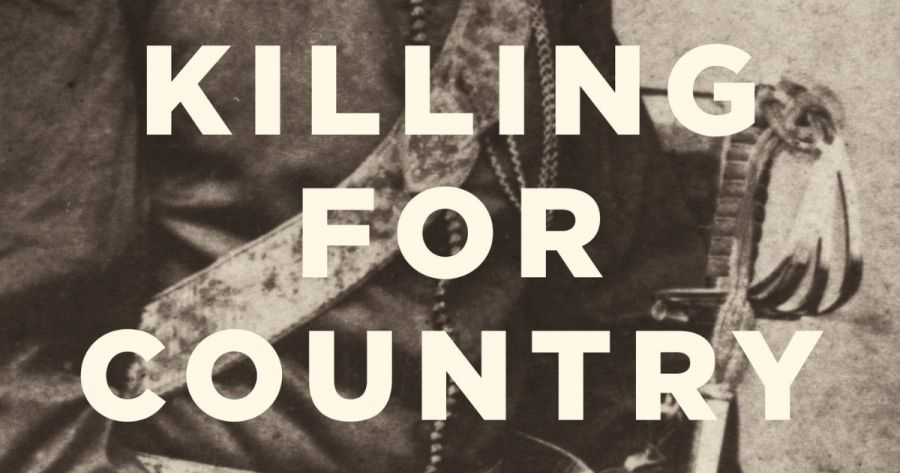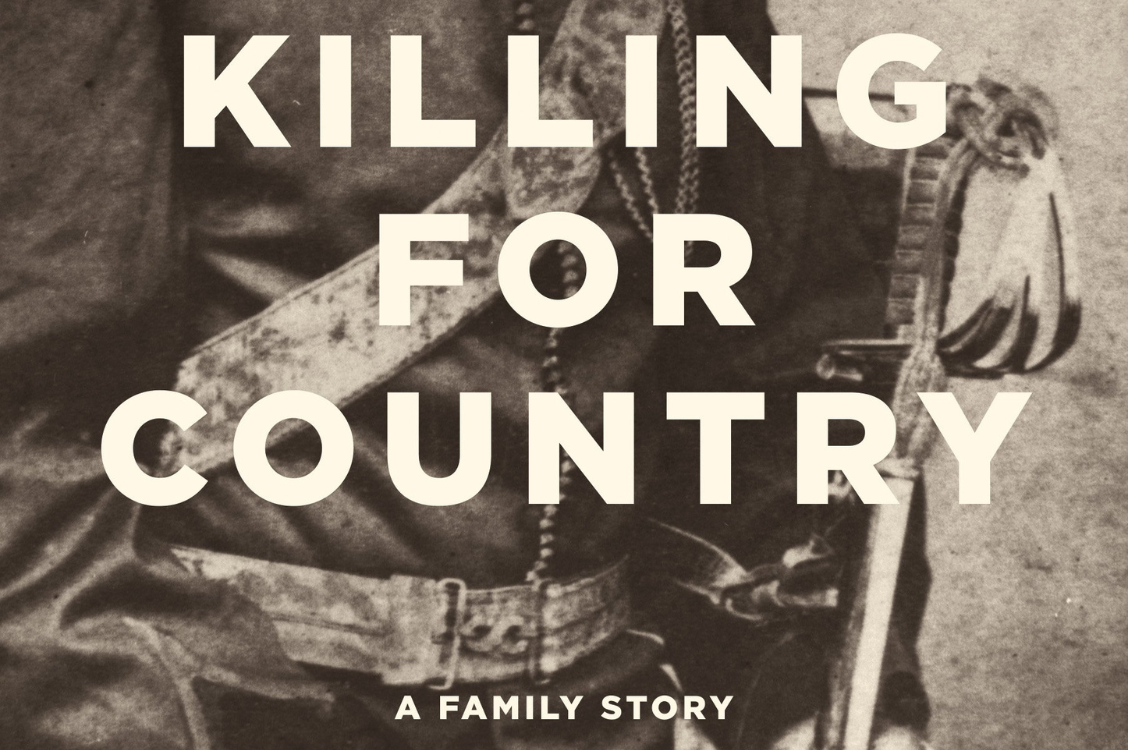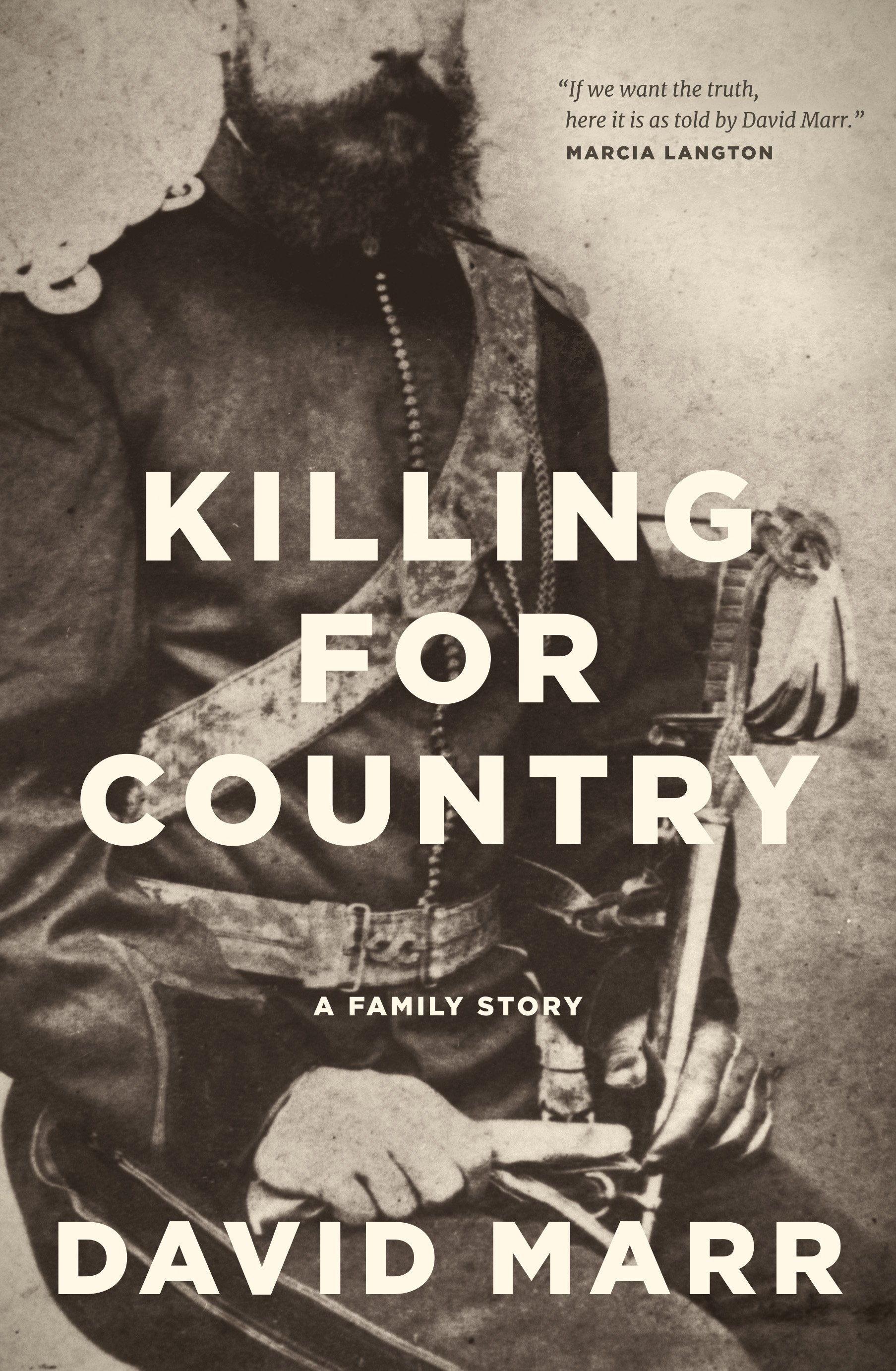
- Free Article: No
- Contents Category: Indigenous Studies
- Review Article: Yes
- Article Title: Follow the sheep
- Article Subtitle: An unflinching contribution to frontier history
- Online Only: No
- Custom Highlight Text:
Forty-three years ago, David Marr – journalist, broadcaster, biographer, political commentator, and public intellectual – published his first book, a sharp, memorable biography of Garfield Barwick, former Liberal attorney-general and chief justice of the High Court. After the appearance of Patrick White: A life in 1991, long considered one of the best biographies ever written in Australia, he might well have followed the more predictable path of the serial biographer. But Marr’s trajectory has proved to be anything but predictable.
- Featured Image (400px * 250px):

- Alt Tag (Featured Image): Mark McKenna reviews 'Killing for Country: A family story' by David Marr
- Book 1 Title: Killing for Country
- Book 1 Subtitle: A family story
- Book 1 Biblio: Black Inc., $39.99 pb, 432 pp
- Book 1 Cover Small (400 x 600):

- Book 1 Cover (800 x 1200):

Long driven by the desire to stare down those ‘dark angels’ that he believes must be defeated if Australia is to change, Marr, in this exhaustive history of his ancestors’ involvement in the theft of Aboriginal lands and frontier violence, confirms the brutality and horror that accompanied the British invasion of Australia. Painstakingly researched and eloquently told, Killing for Country is the story of a nation without moral foundation. ‘Australia,’ writes Marr, ‘was fought for in an endless war of little, cruel battles.’
Prompted by an ‘ancient uncle’, who asked him to find out what he could about his great-grandmother Maud, Marr discovered ‘in the lower branches’ of his family tree, Sub-Inspector Reginald Uhr. Like his brother D’arcy, Reg was a member of Queensland’s notorious Native Police force – ‘a professional killer of Aborigines’. Marr knew immediately what he had to do. ‘Writing is my trade ... I had to tell the story of my family’s bloody business with the Aboriginal people.’
Marr’s ‘family story’ begins with the arrival in Sydney in 1809 of the Shropshire-born merchant Richard Jones. Jones, a smooth talker adept at convincing those in power of his impeccable propriety and moral rectitude, quickly became one of the wealthiest men in New South Wales. His fortune, built largely on tea, whaling, and, from 1825, the import of sheep from Saxony, endeared him to many in the governing class. Massive land grants followed in quick succession. Unimpeded by any obligation to compensate Aboriginal people for his theft of their land – ‘all revenue earned from the black lands of Australia flowed to the Crown’ – there seemed to be no end to Jones’s rapidly expanding empire. In 1822, he married Mary Peterson, whose mother’s second marriage, to Johan Uhr, produced five sons, including Edmund Uhr, Mary’s half-brother and father to Reg and D’arcy.
The chronological and geographical sweep of Killing for Country is vast. Marr tracks Jones’s land grants as his acquisitions (managed by Edmund Uhr from the late 1820s) move steadily north, eventually reaching south-east Queensland. He follows Jones’s fortunes through the boom of the 1830s to the depression of the early 1840s; from untold riches to bankruptcy and financial revival. He tracks the Uhr brothers throughout Queensland, including the Gulf Country, and then to Darwin, until, in the 1890s, D’Arcy ends up as a butcher on the Coolgardie minefields in Western Australia. As few other writers can do, Marr creates a gripping narrative from the rise and fall of private fortunes, the ineptitude, cowardice, and hypocrisy of successive governors and their London overlords, the avarice of squatters and settlers, and the endless parade of killings on the frontier.
Although the starting point for Marr’s history is his family’s involvement in the frontier wars, his gaze shifts far beyond his ancestors to the broader history of land management (or lack of it) in colonial New South Wales and Queensland. As he draws evidence from the press, colonial despatches, government reports, and other primary sources, he remains alive to the larger framework of imperial policy and governors’ previous postings in other parts of the empire, which often helped to explain their thinking regarding the plight of the Aboriginal people the British were rapidly dispossessing.
As ever, for a writer who believes that ‘character is the great neglected subject in politics’, there are striking portraits of key figures and bit players. On Richard Jones: ‘a great white carp in the colonial pond, half hidden in the weeds, always feeding and always dangerous’. On Morris Townsend Somerville, who found land for squatters, recruited Blacks as guides, and shot them when they got in his way: ‘a genial and unscrupulous gentleman of the warrior class’. On William Charles Wentworth: ‘that great windbag of liberty’.
By the time Marr follows Reg and D’arcy Uhr’s wanderings to their bloodstained careers in Queensland’s Native Police force in the 1860s and beyond, the many reports of their unrestrained killing of Aboriginal people make for difficult reading. There were several times when the gory details were so unsettling I had to stop reading. It is clear that this was a difficult book to write and an enormous challenge for Marr, not only to research but to keep sufficient distance from the material in order to understand what happened and why. But his eye throughout is unwavering. Although sections of the book become a relentless blow-by-blow account of killing and destruction – and Marr gives free rein to newspaper reports that document horrific violence – he also gives voice to the minority who dared to question what Noel Pearson has called the ‘casual parsimony’ of Australia’s frontier violence: a shameless, unequal war of conquest which refused to recognise the basic humanity of Indigenous Australians.
As Marr shows, even before Governor Charles Fitzroy established a small Native Police force in 1848, the patterns of frontier violence in colonial Australia were already evident. As Governor George Gipps told the squatters in 1838, because Aboriginal people were British subjects it was not within his power ‘to authorise the levying of war against them’. Regardless, on the ground, the vast majority of squatters saw no need to comply with the terms of their lease by protecting the interests of Aboriginal people on their runs. Instead, they wanted them removed. They took up land beyond the official ‘limits of location’, inadequate government legislation trailing behind them as their hunger for land and wealth drove rapid invasion and increasing warfare.
The descriptions of Aboriginal people in the colonial press – ‘incarnate fiends’, ‘savages’, ‘wretches’, ‘vermin’, ‘a race of bloodthirsty miscreants’, ‘the enemy’ – licensed the ‘state of warfare’ that so many observers described. Settlers demanded ‘protection’ from the government. When it failed to arrive, white vigilantes, ‘driven mad for revenge’ after some of their own were murdered, killed scores of Aboriginal people indiscriminately. They had to be ‘taught a lesson’.
Like others before him, Marr shows that after the Myall Creek massacre in 1838, settlers learnt to hide the killing behind euphemisms such as dispersal, or to pin frontier violence on ‘evil shepherds and runaway convicts’. Bodies were burnt to destroy the evidence. Inquiries ‘ventilate[d] disgust and [took] no action’. During the ‘bloodiest years’ of the conflict, Aboriginal testimony was not accepted in court. Aware of the carnage that was taking place, Queensland governments in the second half of the nineteenth century scrupulously avoided written instructions, ‘limiting, with any clarity, the actions the Native Police could take against Aboriginal Australians’. The Native Police and the war they prosecuted with impunity ‘would never be properly established in law’. Although many of the records ‘have disappeared, presumed destroyed’, Marr notes that scholars estimate that at least 40,000 Aboriginal people died at the hands of Queensland’s Native Police. ‘Slaughter,’ he concludes, ‘was bricked into the foundations of Queensland.’
While the book is one slice of Marr’s ‘family story’, it’s one in which his personal presence is largely absent. As is his wont, he keeps himself out of the narrative. Not until the brief Afterword, a collection of signposts that wait to be unpacked, does he permit himself time and space for reflection. When he first discovered his family’s complicity in frontier violence – a discovery that could await any of us – he felt shame and embarrassment, but not guilt or responsibility. Somehow, the knowledge changed him. What ‘shifted’, he explains without elaboration, was ‘my sense of myself and my family’. He sees the book as ‘an act of atonement, of penance by storytelling’. The intimation of self-punishment and duty embodied in Marr’s ‘penance’ points to the days of ‘dread and disgust’ he experienced while writing the book: disgust not only at the appalling violence of Australia’s frontier but also at the vulgarity that characterised so much of the invaders’ culture.
Unlike Judith Wright’s family history, Cry for the Dead (1981), which, although equally outraged by the killings and massacres, is also a lament for the environment that was desecrated in the wake of invasion, the Aboriginal people killed and the whites who dispossessed them, Killing for Country is driven more by disciplined fury and barely contained revulsion. Yet for both writers, immersion in Australia’s frontier history leads inexorably to a call for action. For Wright, it became inseparable from her involvement in the Aboriginal Treaty Committee (1979); while Marr, who writes in the tradition of frontier history established by historians such as Henry Reynolds, finishes Killing for Country with a call for the Australian War Memorial to commemorate the ‘untold thousands’ killed by the Native Police in the ‘conquest of this country’.
Finally, I was struck by a remark in Marr’s Afterword. In Brisbane, he talked with another descendant of a member of the Queensland Native Police who warned him that today was another time and place. ‘We were different then,’ he told him. ‘No,’ Marr insists, ‘times change, not people.’ I’m not so sure. The people of the past are not earlier versions of ourselves. Context, knowledge, and beliefs determined their behaviour: what they assumed to be true, what they believed to be right or wrong, and what they deemed to be possible. As Marr writes in the Note that prefaces Killing for Country, ‘Language keeps shifting ... the language of today and the values it represents were not in the minds of settlers then.’
Killing for Country joins what is now a vast body of scholarship on Australia’s frontier history. But it stands out for its unflinching eye, its dogged research, and the quality and power of its writing.


Comments powered by CComment